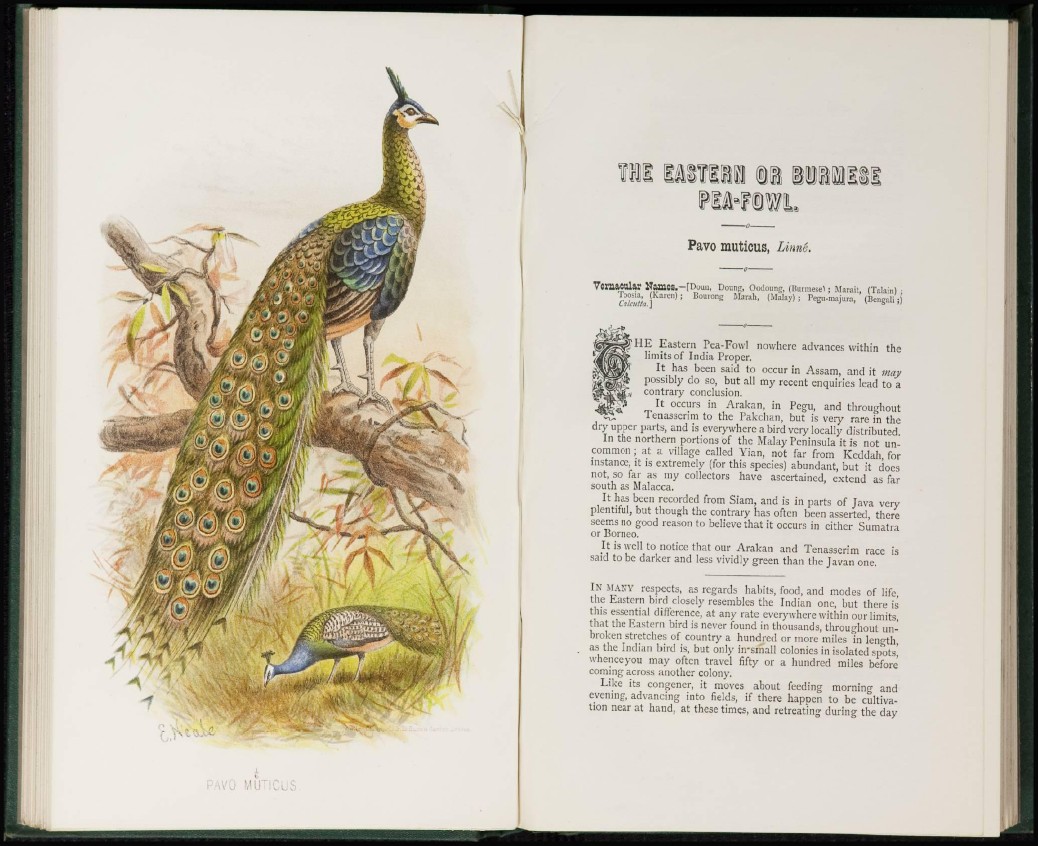
p a v o M u n c us
Pavo muticus, Linné.
Vernacular Mames.—[Dmm, Doung, Oodoung, (Burmese! ; Murait, (Talain) •
CakD'ta ] ' °u r o n g M a r a h ' (M a l a y l ' Pegu-majura, (Bengali ¡)
HE Eastern Pea-Fowl nowhere advances within the
limits of India Proper.
It has been said to occur in Assam, and it may
possibly do so, but all my recent enquiries lead to a
contrary conclusion.
It occurs in Arakan, in Pegu, and throughout
1 enassenm to the Pakchan, but is very rare in the
dry upper parts, and is everywhere a bird very locally distributed.
In the northern portions of the Malay Peninsula it is not uncommon
; at a village called Yian, not far from Keddah, for
instance, it is extremely (for this species) abundant, but it docs
not, so far as my collectors have ascertained, extend as far
south as Malacca.
It has been recorded from Siam, and is in parts of Java very
plentiful, but though the contrary has often been asserted, there
seems no good reason to believe that it occurs in cither Sumatra
or Borneo.
It is well to notice that our Arakan and Tenasserim race is
said to be darker and less vividly green than the Javan one.
IN M A N Y respects, as regards habits, food, and modes of life,
the Eastern bird closely resembles the Indian one, but there is
this essential difference, at any rate everywhere within our limits,
that the Eastern bird is never found in thousands, throughout unbroken
stretches of country a hundred or more miles in length,
as the Indian bird is, but only in-small colonies in isolated spots,
whence you may often travel fifty or a hundred miles before
coming across another colony.
Like its congener, it moves about feeding morning and
evening, advancing into fields, if there happen to be cultivation
near at hand, at these times, and retreating during the day